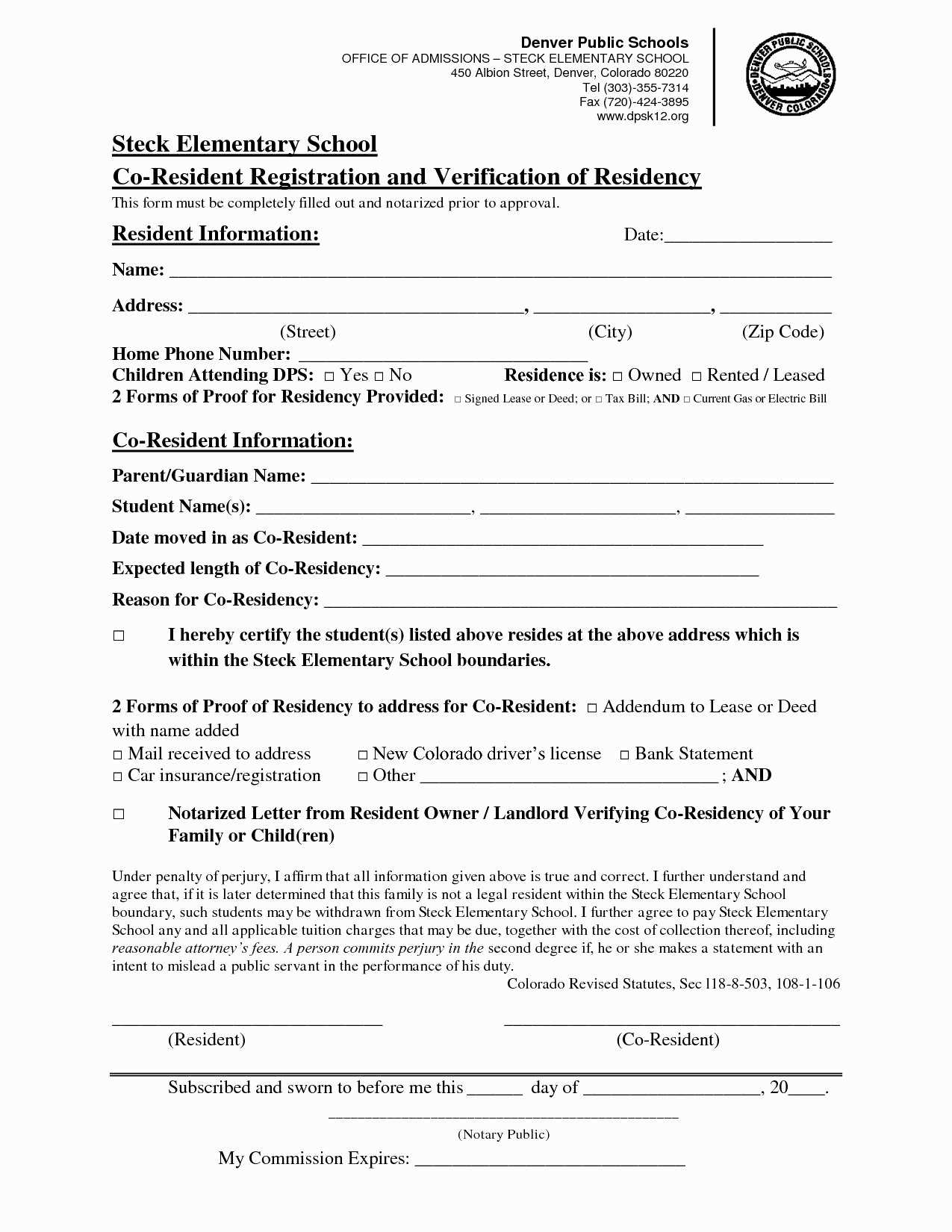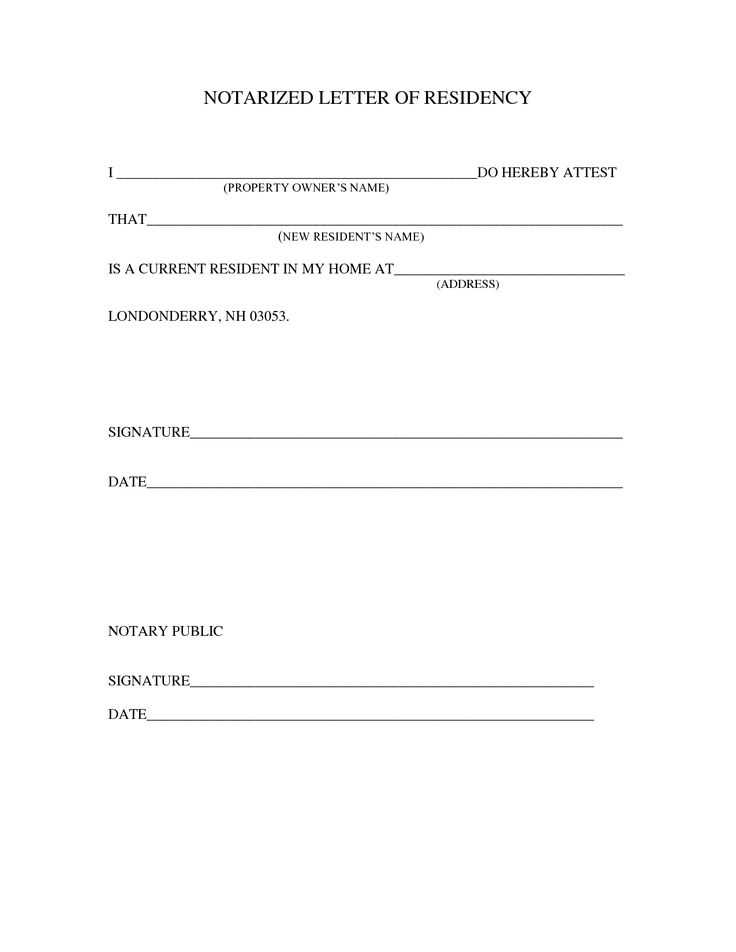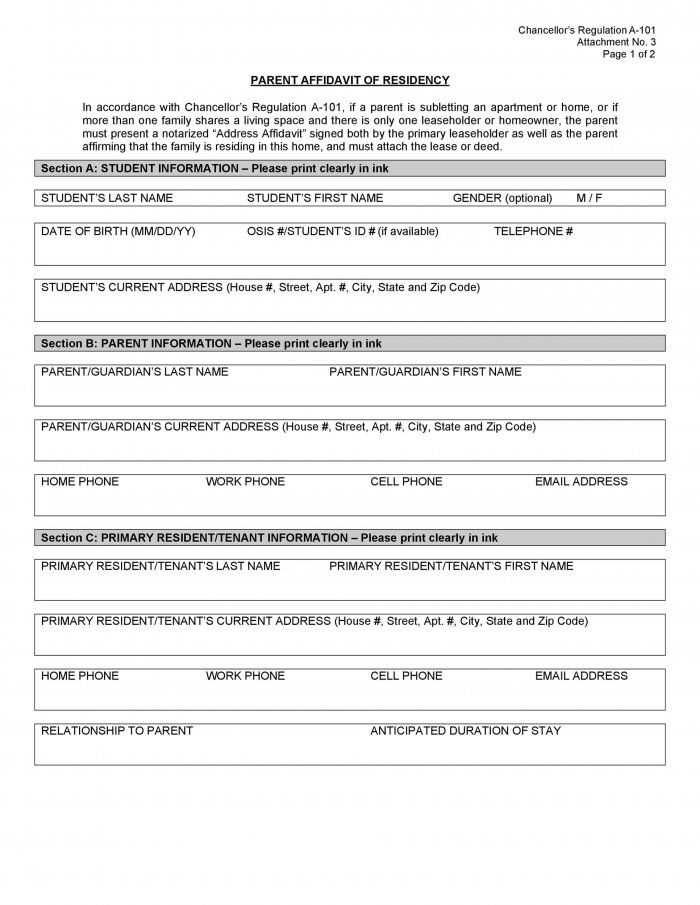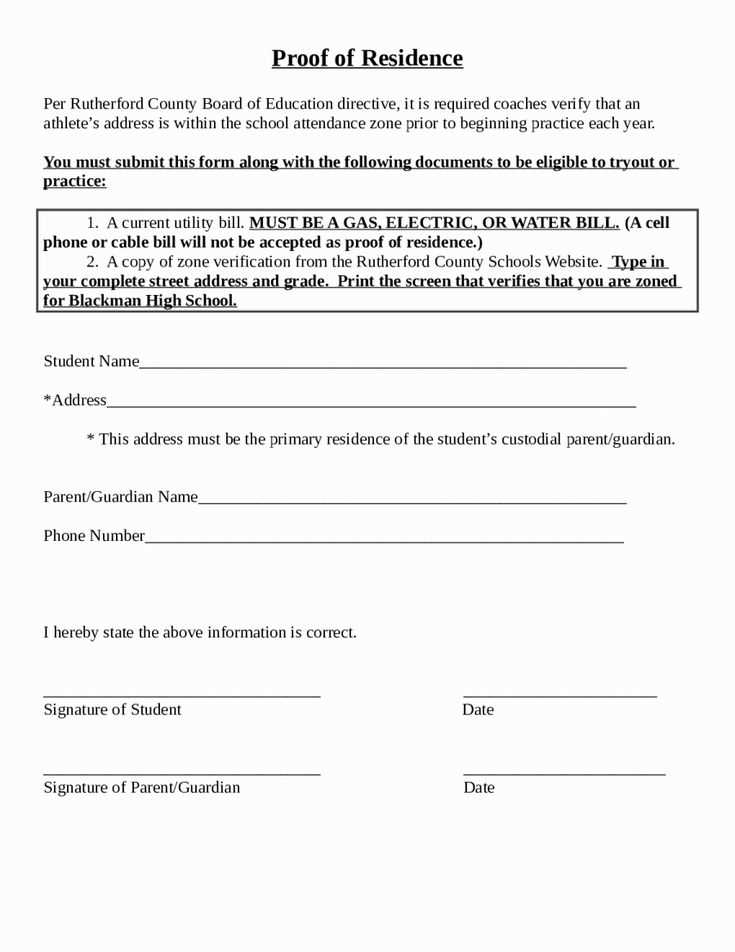Proof of Residency Letter from Family Member Template

When someone needs to confirm their living situation for official matters, a written statement may be required to validate where they reside. This document often needs to come from a close associate who shares the same residence, confirming the individual’s current living arrangements. It serves as proof for various applications, such as opening bank accounts, applying for government programs, or even school registrations.
Important Information to Include

The document must contain certain key details to ensure its validity. It should identify both the person providing the confirmation and the one requiring it. The full address where the individual resides must be stated clearly, along with the date the person has been living there. Additionally, it is important to include the relationship between the two individuals to clarify the connection and responsibility.
What to Mention About the Individual
- Name and address: Full name of the person giving the statement and the address they share with the individual.
- Duration of residence: How long the person has lived at the given location.
- Relationship: Clarify the connection, such as parent, sibling, etc.
How to Write the Document
Ensure the writing is formal and includes all the necessary information. Start with a greeting, introduce the purpose, and confirm the relationship and residence details. Make sure to sign and date the document to authenticate it. In some cases, it might need to be notarized, so check with the relevant institution to determine what’s required.
Common Mistakes to Avoid

Be mindful of several common errors when writing this kind of document. Avoid vague language and ensure the details are clear and accurate. Double-check the address and dates, as any discrepancies can lead to the rejection of the proof. Keep the tone professional and ensure it is free from spelling or grammatical mistakes.
Verification Document Overview
When confirming where a person lives for official purposes, a formal written statement is often needed. This document helps to verify an individual’s current living situation and is typically signed by someone who resides at the same address. The statement serves various functions, such as assisting with financial processes or fulfilling governmental requirements.
Why a Close Relative Can Confirm Residence
In many cases, a person close to the individual who needs verification can provide the necessary confirmation. This is because their relationship ensures that the information is reliable. The person signing the statement usually shares the same address, which strengthens the credibility of the verification.
Essential Details to Include
The document should contain crucial information to ensure its authenticity. It must clearly state both the name and the full address of the person confirming the details. Additionally, it is important to specify how long the individual has lived at that address and their relationship with the person being verified.
How to Organize the Confirmation Document
Begin the document with a formal introduction, stating the purpose of the confirmation. Include the relevant details such as the individual’s name, address, duration of residence, and the relationship between the two individuals. After providing this information, conclude the document with a signature and date to make it official.
Legal Considerations for Address Verification

Different authorities may have specific requirements for such verification documents. It’s important to ensure that the information provided is accurate and that the document is properly signed. In some cases, notarization might be necessary to ensure that the statement is legally binding.
Examples of Verification Statements
Various examples of these documents can be found online. It is important to adapt the sample to the specific situation by including all the required details and following the proper structure. Templates often guide you on what information is needed and how to phrase it correctly.
Common Mistakes to Avoid
When writing this type of document, clarity is key. Avoid vague language and ensure that all required details are included. Double-check addresses, dates, and relationships to ensure that all information is accurate. Also, watch out for grammatical or spelling errors, as these can undermine the document’s credibility.